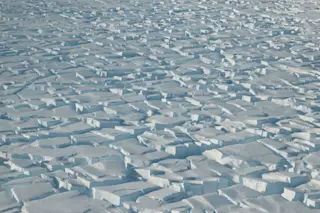An elite team gathered in the United Kingdom on Monday to plot their plan of attack in a daring effort to hold off a global catastrophe. No, it isn't the latest Avengers flick. This group, roughly 100 strong, consists of some of the world's top polar scientists. And their quarry is an absolutely massive chunk of ice.
They're calling it the Thwaites Invasion. Of all the glaciers in Antarctica threatened by climate change, scientists have recently grown especially concerned about one in particular. This Florida-sized glacier, called Thwaites, holds enough ice to single-handedly raise sea levels by several feet — enough to flood communities from Miami to Atlantic City. And there are signs that it's already begun an irreversible collapse.
So today, the United States and the United Kingdom launched a roughly $50 million campaign to poke, prod, scan and survey every mile of this mammoth glacier. The project is ...














